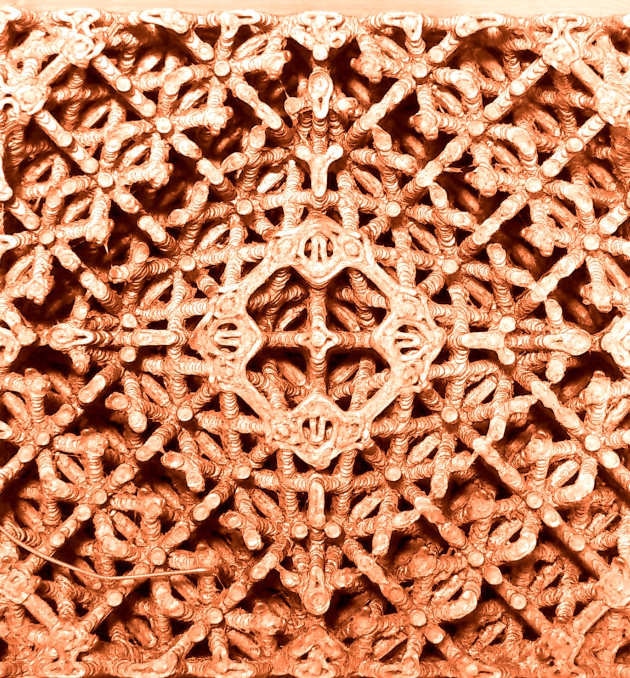Jan 24 2019
Materials scientists from Imperial College London have developed innovative artificial materials, which integrate people’s understanding of metals with 3D printing.
 Image credit: Minh-Son Pham/Imperial College London
Image credit: Minh-Son Pham/Imperial College London
These findings could accelerate the application of 3D-printed materials in all kinds of fields, ranging from vehicles and construction to medical devices.
Generally, 3D printing is used for producing engineering components. The components that are printed include lattice structures— material patterns laid out in a grid-like fashion, with connecting struts and repeating nodes, which are responsible for their lightweight properties.
Conversely, conventional types of lattices have only limited applications, because when they crack and fail, they do so disastrously. Scientists believe that this limitation could be due to the presence of a single pattern of lattice across the material and proposed that changing the internal lattice structures may add strength.
Now, encouraged by the patterns in natural crystals, scientists from Imperial College London along with contemporaries at the University of Sheffield have added new features to 3D-printed metals that imitate the structures in crystals, for example, grains.
By mimicking crystals’ hardening mechanisms, we can substantially strengthen lattice materials produced by 3D printing.
Dr Minh-Son Pham, Study Lead Author, Department of Materials, Imperial College London
The researchers noted that when the novel material—which they called ‘meta-crystal’—is loaded with weight, it is not only relatively stronger but is also more tolerant to damages when compared to traditional lattice materials. The team also noted that decreasing the size of individual grain-like lattice regions inside the structure can improve the strength of the meta-crystals.
The results of the study have been reported in Nature, and can possibly pave the way for lightweight yet tougher 3D-printed materials suited for a wide range of applications.
Imperfect perfection
In presently available 3D printed lattices, a single repeating pattern resembles the structure of a metallic single crystal: the nodes present in the lattice are similar to the atoms existing in the single crystal, and the struts are also similar to the atomic bonds. The atomic planes, or nodes, in each of these structures, are all aligned seamlessly.
Single crystal materials are suitable in certain applications, like the high-temperature end of a jet engine, due to their potential to tolerate deformation at adverse temperatures; yet they may not be able to tolerate mechanical force.
When a pressure is applied to the structure, and after the force is sufficient enough to promote permanent deformation, the lattice will shear along defined planes and a crack will spread across the material. Since there is nothing to stop this shearing, the material collapses disastrously.
Conversely, in the novel materials, which have several grains of crystals, the atomic planes’ alignment is altered from one grain to another. In materials like these, when a shear force remains in one direction, a crack will stop or slow down upon meeting a crystal, the atoms of which are aligned in a different way from the original crystal. In addition, different patterns could be introduced to further strengthen the materials and thus slow down the formation of cracks.
Now we can print robust materials, our method could be used in constructing vehicles and buildings, for example. Together with the combination of functional materials such as magnetic materials, the possibilities are endless.
Dr Minh-Son Pham, Study Lead Author, Department of Materials, Imperial College London
EPSRC and the Royal Academy of Engineering funded the study.
“Damage-tolerant architected materials inspired by crystal microstructure” by Minh-Son Pham, Chen Liu, Iain Todd, and Jedsada Lertthanasarn, was published in Nature on January 16th, 2019.